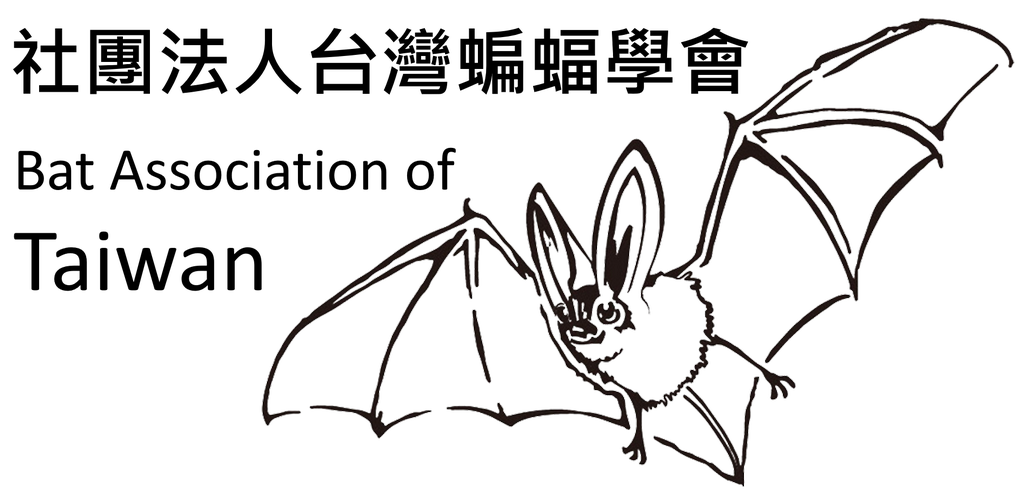蝙蝠研究
2018_霜毛蝠(Vespertilio superans)的棲地變遷研究—以新竹市日本第六海軍燃料廠棲息群集為例_蔡乙慈
出版年份:2018
研究生:蔡乙慈
分類:碩士論文
題目:霜毛蝠(Vespertilio superans)的棲地變遷研究—以新竹市日本第六海軍燃料廠棲息群集為例
Title:Habitat Change of Asian Parti-Coloured Bats (Vespertilio superans) - Case Study of Bat Colony Roost in the Sixth Japanese Naval Fuel Industrial Area in Hsinchu City
摘要:
新竹市日本第六海軍燃料廠(簡稱六燃)是台灣最重要的二戰工業遺址之一,國民政府撤退來台後成為眷村。2011年於大煙囪內發現全台唯一的霜毛蝠(Vespertilio superans)生殖群集,2013年眷戶遷出後六燃成為閒置空間。霜毛蝠過去僅在台灣中高海拔發現單一個體,國內甚少相關研究,因此,六燃煙囪及周邊發現的霜毛蝠棲息群集受到高度重視。近年因煙囪結構補強與地景改變等原因,造成煙囪棲地微氣候改變,霜毛蝠返回煙囪生殖的數量逐年下降,進而轉往周邊民宅鐵皮內生產育幼,此遷移的現象恐將造成霜毛蝠繁衍的危機。由於民宅鐵皮的穩定性不若煙囪,又為私人產權,屋主對蝙蝠的喜惡將影響蝙蝠的生存。
本研究之研究總目標為提出新竹六燃基地霜毛蝠棲地在公有領域之設置與設計原則。次目標含(一) 探討霜毛蝠在六燃大煙囪周邊各階段的棲地轉移過程、(二) 調查各階段霜毛蝠棲地的物理環境條件、(三) 了解民眾對霜毛蝠的經驗與感受、(四) 提出霜毛蝠棲地構成原則。利用文獻回顧、社區訪談、問卷調查與棲地調查討論,彙整霜毛蝠在六燃地區共有四個棲地遷移階段: 屋頂時期(1945~1964)、煙囪時期(1964~2011)、鐵皮時期(2011~2018)、回歸六燃大煙囪廠房(2018~)。
經調查發現,對比鐵皮、煙囪與新竹地區氣候數據,鐵皮棲所3~5月平均溫度較煙囪高約1℃,較新竹大環境高約2℃。霜毛蝠利用鐵皮的數量遠高於煙囪,鐵皮棲所的微氣候調查結果做為未來霜毛蝠棲所設置參考。訪談30位仁愛國宅民眾及取得90份問卷樣本,受訪者普遍不清楚霜毛蝠的特殊性與價值,多數人不害怕蝙蝠,對蝙蝠感到好奇,主要的顧慮為衛生疾病與噪音問題,社區尤其擔心維護管理。
霜毛蝠棲地設置與設計原則包含棲地須維持較溫暖的溫度,棲地內外溫差應高1~2 ℃,尤其3~5月均溫影響霜毛母蝠棲所選擇。棲所材質、朝向東南面及鄰近熱源易使棲所達到升溫效果,因應霜毛蝠體型,縫隙應為1.5~2公分,高度約6~10公尺以上尤佳。七所內採隔間設計以增加微氣候選擇,距離舊棲所近者利用率較高,周邊有綠帶水體能增加入住率。未來六燃大煙囪廠房修復可應用本研究歸納之棲地構成原則,利用教育資源結合發展在地特色,同時維持大環境水體林份,連結歷史建物保存與生態保護資源。延續六燃蝙蝠的棲居脈絡,參考成功蝙蝠移居案例,利用六燃大煙囪廠房修復的機會,將霜毛蝠適合的棲地環境導入,達到文化資產保存與自然生態保育的雙贏目標。
Abstract:
The Sixth Hsinchu Japanese Naval Fuel Plant is one of the most important World War II industrial heritages in Taiwan. After the Kuomintang government retreated to Taiwan, this area has become a military family village. In 2011, the largest reproductive cluster of Asian Parti-Coloured bats in Taiwan was found in the big chimney of Naval Fuel Plant. In 2013, residents of the military village were moved out. This place has become unoccupied. This Bat was only found in high-altitude area in Taiwan once before and it was single. Therefore, very little research has done about this Bat in Taiwan. When they were found in the chimney and the roof of surrounding housing, it has drawn great attention.
The microenvironment change of habitat due to structural reinforcement on chimney has caused the number of bats in the chimney decline. However, the bats stay in the roof of surrounding housing is increasing. The ownership will directly affect the survival of the bat. Four objectives of this study are: (1)To explore the transfer habitat of Asian parti-coloured bats in The Sixth Fuel Plant; (2) To investigate the environmental conditions of the Asian parti-coloured bats habitat in each stage. (3) To understand the public experience and feelings of the bats. (4) To study good practices of bat habitat. There were four habitat transfer stages: the Big roof stage(1945~1964), the chimney stage(1964~2011), the iron house stage(2011~2018), back to the Sixth Fuel Plant stage(2018~).
This research has found:an average temperature of the iron house habitat from March to May was about 1 °C higher than that of the chimney and 2 °C higher than that of the macro environment. The number of bats stayed in the iron house is higher than the chimney. The condition of the iron house was more suitable for bats habitat. The design principles of a preferable condition of the Asian parti-coloured bats habitat included that the habitat must maintain a warmer temperature, the inside environment needs to be 1~2 °C higher. Iron material, facing east to the south and the adjacency of heat source makes it easier to warm up the habitat. The width of gap should be 1.5~2 cm, and the location of habitat is about 6~10 meters or more above ground. Set up various types of habitat to increase choice for bat is helpful. The research also found a higher rate of usage for the old habitat.
The research interviewed 30 people and also received 90 questionnaires from workshops. Respondents generally don’t understand the special and value of the Asian Parti-Coloured Bats. Most people are not afraid of them. Their main concern is about health and noise problems. The community is particularly concerned about maintenance management. In the future the restoration of the Sixth Fuel Plant can applied the design principle of habitat that summarized in this study. Furthermore, utilize educational resources to develop local identity. It is also important to integrate historical preservation and ecological resources. Preserve the bats habitat in the Sixth Fuel Plant. In the long run, achieve a win-win situation of both historical and ecological conservation.
